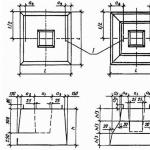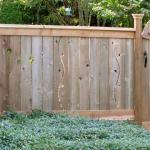ADVANTAGES OF USING THE RAILING SYSTEM
They are as follows: the absence of randomly lying kitchen utensils; all the necessary things are always in sight and within reach; the ability to easily and quickly move any shelves and hooks from place to place, and with them kitchen appliances practically does not demand leaving - it is enough to wipe with a rag from time to time.
Installing railing in the kitchen is not difficult for home master. But it is necessary to take into account some important points. First of all, it is necessary to correctly determine the place for installing the structure.

INSTALLATION PROCEDURE
Marking and preparation of holes;
Attaching bushings to the wall;
Fixing supports;
Fixing tubes.
Marking and preparing holes
The solution to the problem of how to hang the railing in the kitchen begins with marking the holes for the fasteners. It is best to mark using the building level. After marking, we proceed to drilling holes. If attached to the wall ceramic tile, then for its drilling we choose a drill with a diamond coating or a victorious one.

Drilling holes
If you can’t decide at what height to hang the railing in the kitchen, then fix it at about chest level. So it will be more convenient for you both during installation and subsequent use of the product.

Attaching the grommets to the wall
Advice! If the length of the railing system exceeds one meter, then it must be installed not on two, but at least on three fasteners. This is necessary for the further safe use of the entire fixed structure.

Support fixing
They are a tubular or rectangular part with two holes: one (larger) for the tube, the other (smaller) for the sleeve. We fix the support We put this part on the sleeve. Using small hex head screws, we fix the support on the sleeve. Similarly, we fasten the rest of the supports.

Fixing the tubes
The final stage of our work is the installation of tubes. We insert the tube into the fixed supports, trying to make sure that the ends of the tube evenly extend beyond the extreme supports. Fix the tube with a hex head screw.
If the design provides for several tubes, we fix the rest in the same way.
But that's not all. In our story about how to fix the rails for the kitchen, there is one small moment left. It is necessary to install decorative caps on both ends of the tube. The plug consists of two parts fastened together with a screw. Having connected the parts together, we hammer the plug into the tube.

Advice! Hammer not with the metal, but with the wooden part of the hammer. This will avoid damaging the chromed surface of the plug. Now you know how to hang railings in the kitchen.
After their installation, the matter remains small - hang all the necessary kitchen utensils on them.

Here are a few useful tips how best to do it:


- This is especially true for bottle holders and small fruit bowls.
- if you have paper hand towels or cling film - buy a special holder with sharp jagged edges for them. This is necessary in order to make it convenient to tear off the necessary part of them (the price of such a holder is low);
you can purchase and place a special inclined shelf for a cookbook next to the stove (although it is quite possible that you do not need a book or any other instructions for cooking).

Thus, gathering with your handsand railing system, you will be able to facilitate and speed up the process of cooking. Besides, this design will perfectly fit into the interior of any kitchen.
The issue of creating comfort in the kitchen and providing convenience there can be solved in different ways. For example, by placing a variety of knick-knacks, napkins, bouquets, or vice versa - excluding all unnecessary objects from the field of view. But there is one thing that proponents of either approach will no doubt like. This is a railing system.
Installing railings in the kitchen will allow you to get rid of unnecessary running around in search of the necessary, at the moment, kitchen utensils.
What is railing
This fashionable foreign word called a metal or plastic tube fixed on the kitchen wall, on which various shelves, nets and hooks for storing kitchen utensils are hung. Mounting the railing in the kitchen is carried out using special brackets and does not cause difficulties.
Benefits of using a railing system
They are as follows:
- lack of randomly lying kitchen utensils;
- all the necessary things are always in sight and within reach;
- the ability to easily and quickly move from place to place any shelves and hooks, and with them kitchen appliances
- practically does not demand leaving – it is enough to wipe with a rag from time to time.
Types of rails
These structures are divided into two main types:
- Multi-tiered. (Usually used for small kitchens, mounted on a free section of the wall or between cabinets);

- Long . (They are used in kitchens with large area, or where instead of wall cabinets hanging shelves for the kitchen).
Every person at least once in his life has seen a car on the roof of which rails are installed, i.e. special slats (skids), with the help of which bulky household goods are transported. In addition, roof rails allow you to transport sports equipment and camping equipment over various distances. Often such additional elements used as a basis for car boxing. It should be noted that the installation of roof rails vehicle gives the interior of the car a sporty look and makes the car more individual.
Types of rails and types of their placement
Today, in numerous specialized stores, a variety of both model and universal roof rails are presented. Their difference lies in the fact that model fixing elements are produced for a specific brand of car, so it is not possible to mount them on other cars. Universal fixing elements are designed for installation on most modern vehicles of domestic and foreign manufacturers. There are two types of roof rails on the roof of the car: transverse and longitudinal.

Components of car rails
The standard railing consists of the following elements:
- The main pipe, the diameter of which most often varies from 25 to 51 mm.
- Holders (2 pcs.).
- Plugs (2pcs).
The materials from which railings are made
The fasteners may be made of plastic, steel, or a combination of these materials. A layer of specialized powder paint is applied to their surface, which minimizes Negative influence high humidity, ultraviolet radiation and changes in ambient temperature.
Mounting procedure

Practice shows that the installation of roof rails is best entrusted to specialists who have professional knowledge and have a sufficient amount of experience in this matter. In addition, station workers Maintenance are responsible for the quality of the work performed, therefore, in case of detection of any defects, their elimination will be carried out at their expense.
If for some reason it is not possible to contact specialists, then you can try to install the roof rails yourself. The first thing to do if you install fixing elements with your own hands is to find out if there are seats for them on the roof of the car. If such holes are provided in the design of the car, then they are hidden under protective plugs, which are quite easy to remove. To do this, the plugs should be pulled to the side indicated by the arrows printed on them, and pulled up. Next, regular holes must be cleaned of dust particles and degreased, and then applied to the seats with a layer silicone sealant used for outdoor work. If the holes are not carefully treated with sealant, then there is a high probability that moisture will enter the car interior over time. On the final stage rails are attached to the prepared surface of the car body.
It is much more difficult to install roof rails on a car, the design of which does not provide for the presence of regular holes for fixing elements on the roof.
Immediately before installation, it is necessary to carry out preparatory work, namely:
- Thoroughly clean the roof of the car from dirt and dust;
- Degrease the surface of the body to which the rails will be attached;
- Dismantle the interior ceiling trim.
After doing preparatory work you can start drilling holes in the body. In order not to have to drill extra holes, it is necessary to carefully calculate the places of future seats for the rails. Protect paintwork bodies from hot chips that form during drilling, you can use masking tape, which must be glued to the roof surface around future holes.
Operating rules

In order for car roof rails to last as long as possible, motorists must follow simple rules:
- It is recommended to transport the first load on the fastening elements no earlier than 24 hours after their installation;
- Before each trip, you need to check how firmly the roof rails are attached to the car body;
- The load carried on the rails must be evenly distributed over them and carefully fixed;
- The maximum load capacity of the rails must not be exceeded.
Compliance with the last paragraph of the rules is most important.
Experts do not recommend transporting cargo on rails, the weight of which exceeds 70-80 kg, because. overload can cause the most negative consequences, from the skew of the roof of the vehicle to the deformation of the doorways.
If any difficulties arise during the installation of railings, then there are at least two ways to solve any problems:
- seek help from third-party specialists;
- explore step by step photos and videos about self installation fixing elements on the roof of the car.
Video
Installing Voyager roof rails on TOYOTA Land Cruiser Prado 150:
A photo








There are a lot of tools that help organize the useful space in the kitchen. And the most favorite of them is metal railing. From the moment he appeared, the hostesses sighed calmly - now there is always a place for kitchen utensils. The railing is especially convenient for small rooms where it is difficult to place spacious cabinets. Therefore, some things can be safely hung on the railing. Installing the railing is quite simple, as you will see below.

Railing is a metal structure in the form of a pipe that is attached to the wall. Various accessories-holders are hung on the pipe. it perfect fit to store various things. You can hang kitchen cutlery, oil and spice holders, towels, boards and much more on the rails.
Rails can be of several types:
- horizontal;
- vertical;
- suspended;
- magnetic.



Horizontal rails are the most popular and common design. They are attached to the wall horizontally and, as a rule, go along working area between the table and wall cabinets.
Important: in small kitchens, you can put horizontal railing along all walls. On such a railing, you can place most of the things that should be at hand. On the walls opposite the work area, the rails should be at such a height that they do not touch when moving.
Magnetic roof rails serve as a modification of the horizontal. They are designed to hold metal objects without hooks. They do not need accessories - as a rule, knives and cutlery are attached to them. The installation of such roof rails is carried out above the desktop at the hand of the hostess.
Vertical rails are mounted in the area of the bar counter or as a separate structure for storing things. It connects the ceiling and shelves, countertops or stretches to the floor. Various accessories are hung on it - holders for bottles, glasses, cups, hanging shelves.
The installation of hinged rails is ideal in large kitchens, where the working area is rendered in the form of an island. Fastening of such railings is made to the ceiling. Any accessories are hung on it.
Which railing to choose is decided individually, depending on the design of the room, its area and personal preferences.
pros
These simple metal structures The kitchen has a lot of benefits.

They are convenient because:
- all things are at hand in a conspicuous place;
- you can change their places, organizing a comfortable space;
- frees up space in the table and in cabinets for storing other things;
- the space in the kitchen ceases to look cluttered, order is created;
- easy to care for.
You can zone the space with the help of roof rails, organizing different zones works. On the railing along the sink, you can install accessories for soap, detergents, towel. On the horizontal rail along the working area there are accessories-holders for cutlery, spices and butter, and on the magnetic rail there are knives. Pots can be hung on the vertical railing between the stove and the wall.
Types of accessories
Before you place the railing, you need to decide what accessories are for them. And there are a great many of them.

Currently available for purchase:
- shelves;
- towel holders;
- containers for bottles;
- containers for spices;
- dryers for plates and cups;
- containers for spoons;
- hanging hooks;
- bread bins;
- baskets.
Accessories in the kitchen can be swapped, removed.
Production material
The material of manufacture of the railing is always metal - steel. But it can be coated with various other types of alloys: chrome, brass, alloys that imitate gold or silver.


Recently there have been design views roof rails - covered with leather Or glass with backlight. It must be said that leather-covered roof rails are completely impractical and non-functional and are more suitable for creating pictures for interior magazines than for real working kitchens where food is prepared.
At what height to hang
The choice of height at which to install the railing is selected based on the height of the one who works in the kitchen most often. Usually, standard height settings are at eye level. Before installation, it is necessary to approximately determine this distance and make marks on the wall.
Installation rules

Installing the railing is quite simple - and it does not matter which of the types the choice fell on. The fastening rules are almost always the same. So how to do it:
- make marks on the wall at the fastener attachment points - to position the railing strictly horizontally, it is better to use a level;
- put the holders on the pipe and fix with screws, which should be at the bottom;
- drill holes in the wall;
- attach the railing with fasteners;
- put caps on the edges.
Important: Fasteners are selected depending on the type of wall material in the kitchen. The fastening must be strong - with a railing length of 100 cm or more, it must be attached to the wall in 3-4 places.




